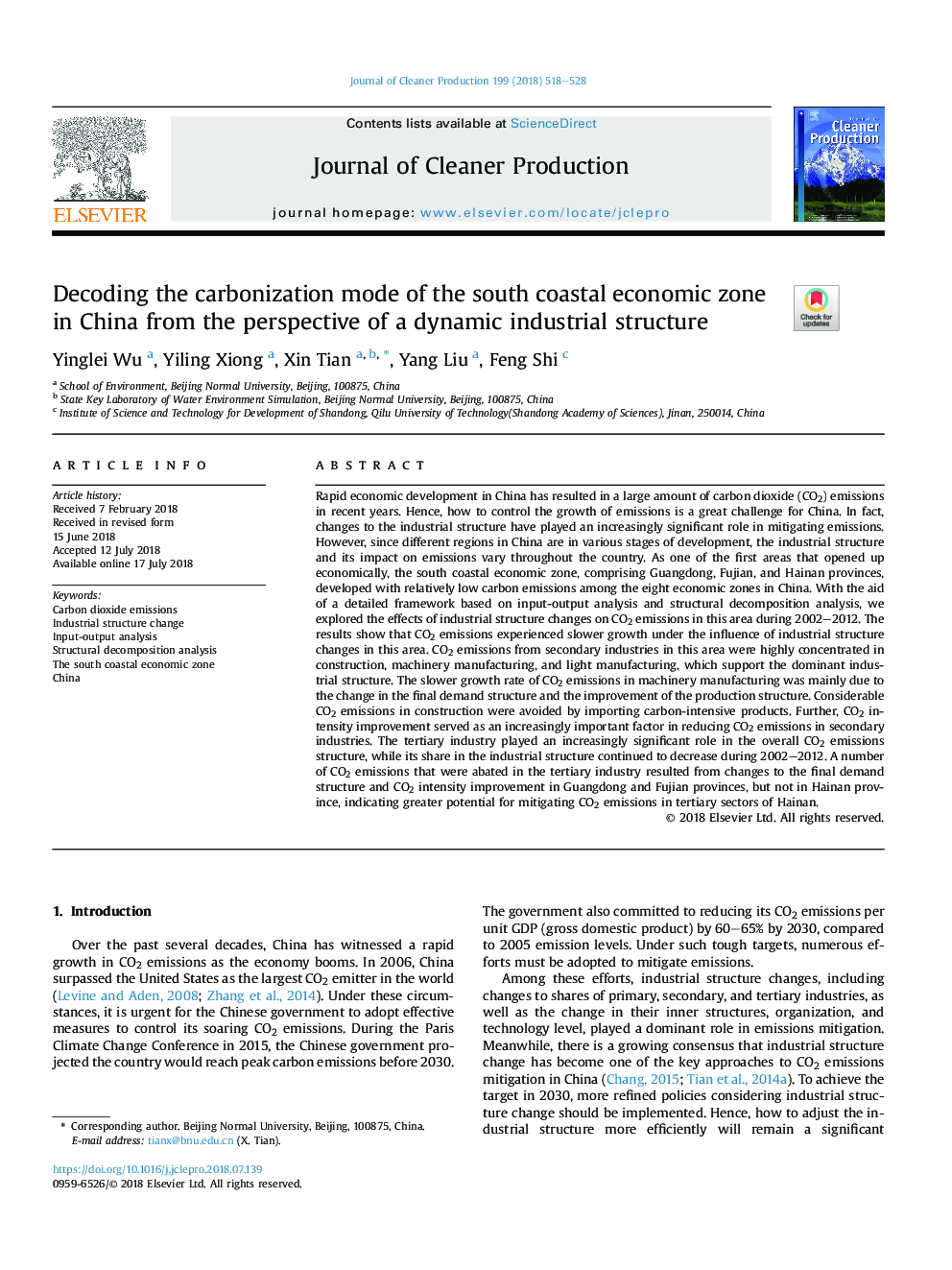| کد مقاله | کد نشریه | سال انتشار | مقاله انگلیسی | نسخه تمام متن |
|---|---|---|---|---|
| 8093229 | 1522053 | 2018 | 11 صفحه PDF | دانلود رایگان |
عنوان انگلیسی مقاله ISI
Decoding the carbonization mode of the south coastal economic zone in China from the perspective of a dynamic industrial structure
ترجمه فارسی عنوان
رمزنگاری حالت کربنیزه منطقه اقتصادی ساحلی جنوبی در چین از منظر ساختار صنعتی پویا
دانلود مقاله + سفارش ترجمه
دانلود مقاله ISI انگلیسی
رایگان برای ایرانیان
کلمات کلیدی
انتشار دی اکسید کربن، تغییر ساختار صنعتی، تجزیه و تحلیل ورودی-خروجی، تجزیه تجزیه ساختاری، منطقه اقتصادی ساحلی جنوبی، چین،
موضوعات مرتبط
مهندسی و علوم پایه
مهندسی انرژی
انرژی های تجدید پذیر، توسعه پایدار و محیط زیست
چکیده انگلیسی
Rapid economic development in China has resulted in a large amount of carbon dioxide (CO2) emissions in recent years. Hence, how to control the growth of emissions is a great challenge for China. In fact, changes to the industrial structure have played an increasingly significant role in mitigating emissions. However, since different regions in China are in various stages of development, the industrial structure and its impact on emissions vary throughout the country. As one of the first areas that opened up economically, the south coastal economic zone, comprising Guangdong, Fujian, and Hainan provinces, developed with relatively low carbon emissions among the eight economic zones in China. With the aid of a detailed framework based on input-output analysis and structural decomposition analysis, we explored the effects of industrial structure changes on CO2 emissions in this area during 2002-2012. The results show that CO2 emissions experienced slower growth under the influence of industrial structure changes in this area. CO2 emissions from secondary industries in this area were highly concentrated in construction, machinery manufacturing, and light manufacturing, which support the dominant industrial structure. The slower growth rate of CO2 emissions in machinery manufacturing was mainly due to the change in the final demand structure and the improvement of the production structure. Considerable CO2 emissions in construction were avoided by importing carbon-intensive products. Further, CO2 intensity improvement served as an increasingly important factor in reducing CO2 emissions in secondary industries. The tertiary industry played an increasingly significant role in the overall CO2 emissions structure, while its share in the industrial structure continued to decrease during 2002-2012. A number of CO2 emissions that were abated in the tertiary industry resulted from changes to the final demand structure and CO2 intensity improvement in Guangdong and Fujian provinces, but not in Hainan province, indicating greater potential for mitigating CO2 emissions in tertiary sectors of Hainan.
ناشر
Database: Elsevier - ScienceDirect (ساینس دایرکت)
Journal: Journal of Cleaner Production - Volume 199, 20 October 2018, Pages 518-528
Journal: Journal of Cleaner Production - Volume 199, 20 October 2018, Pages 518-528
نویسندگان
Yinglei Wu, Yiling Xiong, Xin Tian, Yang Liu, Feng Shi,
